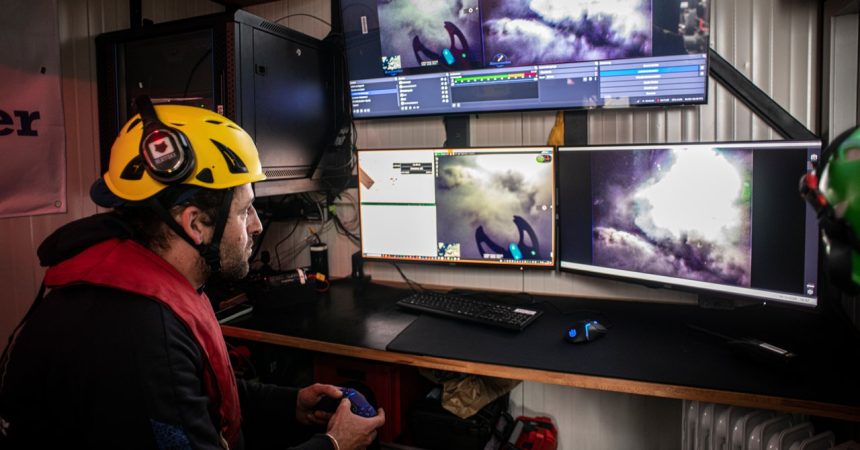The Baltic Sea, a vital waterway for Northern Europe, carries a hidden and perilous legacy: tons of unexploded munitions dumped after World War II. These corroding remnants pose a significant threat to marine life and human activities, leaching toxic chemicals and risking accidental detonation. A recent pilot project, spearheaded by German authorities, offers a glimmer of hope for tackling this daunting challenge. Utilizing innovative technology, the project aims to develop a comprehensive system for locating, retrieving, and safely disposing of these underwater hazards, potentially paving the way for similar clean-up efforts worldwide.
The pilot project centered around the repurposed barge, SeaTerra, equipped with advanced robotic systems and manned by experienced munitions disposal experts. The strategy involves employing remotely operated vehicles (ROVs) fitted with cameras, sonar, and specialized grabbers to locate and collect the submerged ordnance. These ROVs, offering greater maneuverability and continuous operation compared to traditional platform-based cranes, are crucial for accessing challenging underwater terrain. The retrieved munitions are then transferred to the SeaTerra platform, where they are carefully examined and prepared for eventual incineration in a specially designed floating disposal facility.
Initial tests, despite some technical hurdles such as limited visibility and inadequate lighting which hampered remote operation, demonstrated the feasibility of the core concept. The ROVs successfully identified and collected munitions, proving the viability of directly retrieving and storing the ordnance in transport crates. While acknowledging the need for further refinement, project leaders expressed optimism about the system’s potential, highlighting the significant progress achieved in developing a practical solution for this complex environmental problem.
The project also underscores the ongoing tension between technological advancements and the indispensable role of human expertise. While the ROVs offer a safer and more efficient method for retrieving munitions, the dangerous and delicate nature of explosive ordnance disposal necessitates the continued involvement of highly trained specialists. Experts emphasize that human oversight and intervention will remain critical, particularly in handling more complex or unpredictable situations. The goal is to optimize the synergy between technology and human skill, maximizing efficiency while ensuring safety.
Looking beyond the Baltic, the project’s success could have far-reaching implications for other regions grappling with similar underwater munitions challenges. The widespread practice of ocean dumping, prevalent until the 1970s, has left a dangerous legacy in many parts of the world. The innovative technology developed in this project, if proven effective and cost-efficient, could be adapted and deployed globally, accelerating clean-up efforts and mitigating environmental risks.
However, the financial viability of widespread underwater munitions disposal remains a significant hurdle. Unlike commercial salvage operations, removing and destroying hazardous waste offers little financial return, requiring substantial government or international funding. While the technology promises greater efficiency and speed, the ultimate success of such endeavors hinges on the willingness of governments and international organizations to prioritize environmental remediation and commit the necessary resources. The abundance of dumped munitions globally underscores the urgent need for sustainable funding mechanisms to address this persistent threat.



